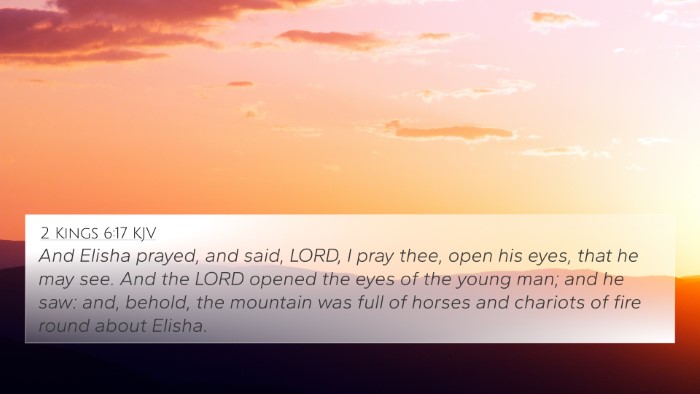Understanding Acts 9:8
The verse from Acts 9:8 states: “And Saul arose from the earth; and when his eyes were opened, he saw no man: but they led him by the hand, and brought him into Damascus.” This pivotal moment in Saul's life signifies a profound transformation beginning his journey to becoming Paul the Apostle.
Summary of Acts 9:8
Acts 9:8 describes the initial physical and spiritual blindness that Saul experiences after his encounter with the risen Christ. This blindness symbolizes his previous state of being uninformed and misguided in his faith. The practical act of being led by the hand to Damascus indicates a shift not only in Saul's physical condition but also in his spiritual journey.
Commentary Insights
- Matthew Henry: Henry emphasizes the significance of Saul's blindness as a divine intervention meant to prepare him for a vital change in life direction and purpose. This incident illustrates God’s ability to convert a hardened heart and bring a powerful testimony from a former persecutor.
- Albert Barnes: Barnes discusses the physical aspect of Saul's experience, noting that blindness here serves as a metaphor for spiritual understanding. His inability to see is paralleled by his previous lack of insight into the nature of Christ and the early Christian faith.
- Adam Clarke: Clarke remarks on the severity of Saul’s situation, advocating that his experience portrays God’s mercy and how He can use even the most unlikely individuals for His glory. Clarke also emphasizes the role of community, as Saul needed help to navigate his new reality.
Bible Cross-References
Several Bible verses provide thematic connections and insights into Acts 9:8:
- Acts 22:6-11: Offers a more detailed account of Saul’s conversion and blindness.
- Isaiah 42:6-7: Prophecies about spiritual blindness and the opening of the eyes of the blind.
- Matthew 7:3-5: Discusses the concept of perception and logs in one’s eye, linking to Saul's spiritual blindness.
- 2 Corinthians 5:17: Speaks about becoming a new creation, emphasizing transformation, much like Saul's transition.
- John 9:39-41: Discusses the significance of spiritual sight and blindness in relation to Jesus’ teachings.
- Philippians 3:5-6: Paul's reflection on his past as a Pharisee before conversion, illustrating his journey.
- 1 Timothy 1:12-16: Paul speaks of his previous life and the mercy shown to him, highlighting transformation.
Thematic Connections
The themes of blindness and sight, conversion, and divine calling permeate throughout scripture and this verse serves as a critical focal point to explore these motifs:
- Blindness and Insight: Acts 9:8 can be linked to passages like John 9, where physical sight represents deeper spiritual truths.
- Transformation: The story of Saul is echoed in many scriptures where individuals encounter God and are forever changed.
- Divine Calling: This moment marks the beginning of Saul/Paul's life dedicated to spreading the Gospel, paralleling themes in Isaiah 6:8.
Tools for Bible Cross-Referencing
To understand the interconnections in Scripture, utilizing tools for Bible cross-referencing can enhance one's study:
- Bible Concordance: Helps locate verses related to specific words or themes.
- Bible Cross-Reference Guide: Provides links between related scriptures for deeper understanding.
- Cross-Reference Bible Study: A method that involves exploring interconnected verses across the Bible.
Conclusion
Acts 9:8 is not merely a historical account but a foundational verse that introduces the profound changes in Saul's life. Understanding this verse through inter-Biblical dialogue encourages deeper reflection on the transformative power of God in the lives of believers. As we explore the connections between Bible verses, we find a rich tapestry of faith, redemption, and the incredible journey of spiritual awakening.








